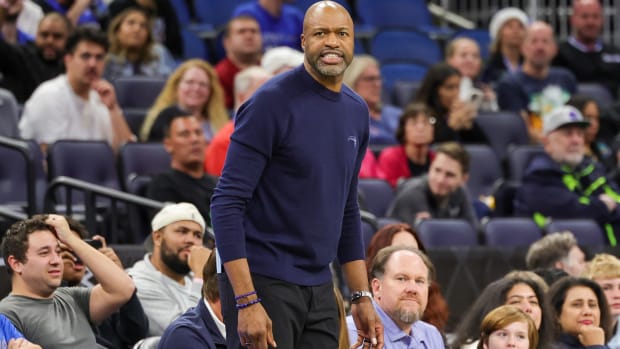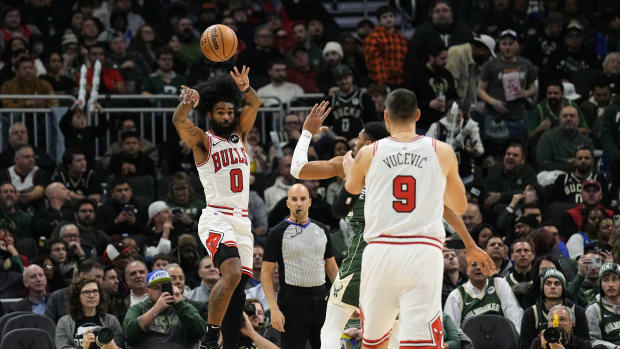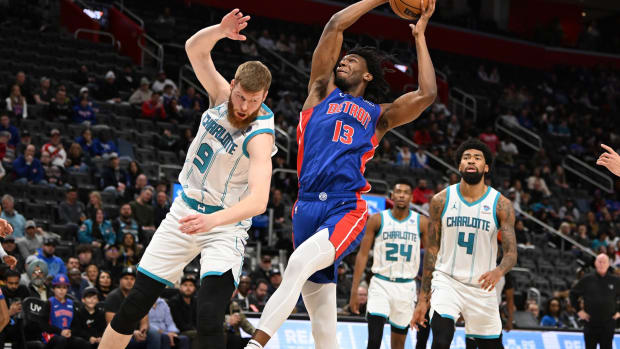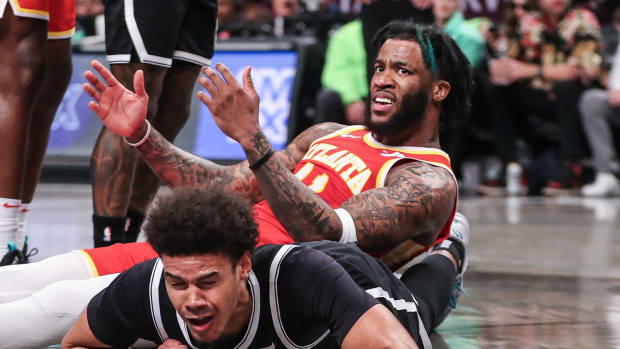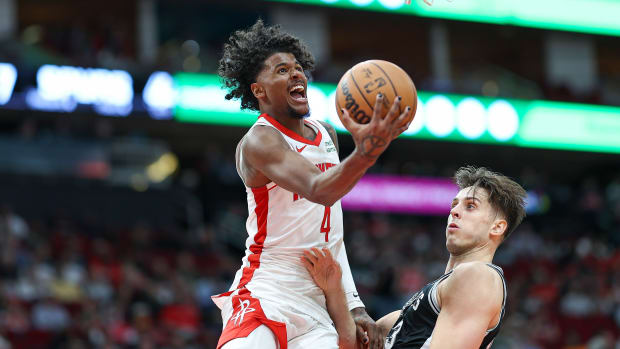Clutch Shots: How Three NBA Photographers Captured Kawhi Leonard's Game 7 Buzzer-Beater
This story appears in the May 6, 2019, issue of Sports Illustrated. For more great storytelling and in-depth analysis, subscribe to the magazine—and get up to 94% off the cover price. Click here for more.
Kawhi Leonard’s last-second dagger against the Sixers wasn’t just the biggest basket a Raptor has ever made. It was almost a new level of drama for the NBA: The first buzzer-beater to end a Game 7. We asked three NBA photographers who captured three different views of history on May 12 to tell us what they were thinking.
I was on strobes, so I would only get that one frame—I had to time it perfectly. I'd rather have the ball up a little bit in the air so there's less time on the clock. That's why I waited that little bit of time while the ball was at its peak. His shot was so short. I'm up on one knee, ready to run down the court just in case I have to, but once it hit, I'm like, "I'm gonna take a seat back down because we're going to overtime." And then it hits the rim four times and it looks like somebody pushed it in from the other side. It was crazy, because right before the play I was thinking that 18 years ago, Vince Carter took the shot from the corner right in front of me in Philadelphia. And he missed it. Those are the things that are going through your head. But this one was made. History was made with Kawhi right there. — Jesse D. Garrabrant
I was on motor drive, but I just took three frames. You never know where the play is going to go, but if you elevate yourself a little bit it helps you see a little more of the court. I got lucky that there was a hole in the defense, so you could see what was happening there when I took the photograph. It comes down to being in the right place at the right time. I could've been totally closed out, but I put myself in the middle of the court thinking that if Kawhi went over to the bench and he was jumping back, I would have the right angle on him. You know what you see through the lens, and you pray that everything is in focus, but what you're thinking about right after [the shot] is reaction. I immediately turned my mind to looking for other players. That's always my mind-set: "He's just released the ball, now I've got two or three seconds, if that, to shift my lens to somebody's reaction." You're always trying to think one step ahead. — David Dow
They inbound the ball, and it just all went really, really, really slow for me. Sometimes as a photographer you just know when a shot's not going in, but then it took this really odd bounce. It was the loudest I've ever heard our arena, ever. I chose to stay a little bit looser, so I could see more in the frame and show a little bit more of an atmosphere. When you're at a higher angle, it's a little bit easier to see everything than it would be on the floor. You just kind of point the lens at him and keep clicking as each moment happens. But when it hit the rim I had to tell myself to keep shooting. I'm glad I did. I'm not sure why he knelt down like that—I think maybe he couldn't see. The thing I like is you can see how everybody is looking at what's going on. What a Kawhi way to win. — Mark Blinch

































